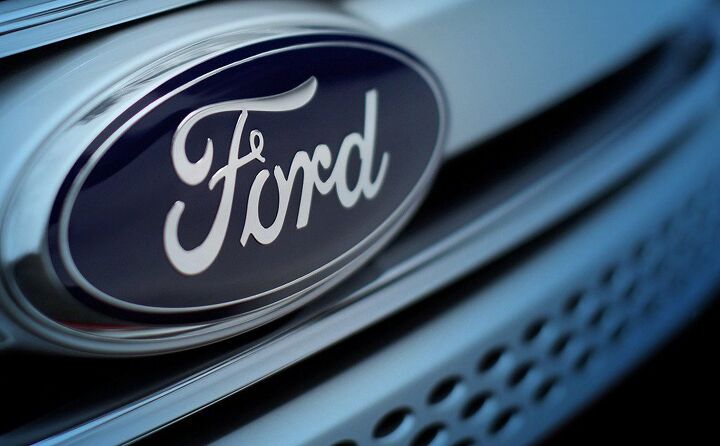Carbon Fiber Could Be Coming to a Ford Subframe Near You

If you’re worried that your corroded subframe will one day eject your car’s engine or suspension components like a spent hull from an Ithaca pump, the future holds promise. (Though you should still get that undercarriage checked out.)
Ford Motor Company, working with mega supplier Magna International, has developed a prototype vehicle subframe made of carbon fiber-reinforced composites. The goal is to one day offer a subframe that’s impervious to rust, while reducing weight and complexity.
Magna claims the new structure reduces mass by 34 percent and makes do with 87 percent fewer parts.
Instead of the 45 steel parts needed to build a current Ford subframe, the prototype uses just four steel parts, plus two molded composite parts. Adhesive bonding and structural rivets join those two molded components into holy matrimony.
Besides the aforementioned benefits, equipping a vehicle with a carbon-fiber subframe could improve the model’s stiffness and crash performance. Assuming the structure holds up well under durability testing, the only potential drawback would be component cost — though the higher cost of the two composite pieces could be offset by the vast reduction in overall parts.
According to the supplier, the new design aced its performance requirements based on computer-aided engineering analyses. The subframes are now in production, bound for component and vehicle-level testing at Ford.
“Collaboration is the key to success in designing lightweight components that can give our customers fuel economy improvements without compromising ride and handling, durability or safety,” said Mike Whitens, Director of Vehicle Enterprise Systems with Ford Research and Advanced Engineering, in a statement.
He added, “We must continue to work hard to achieve these lightweight solutions at the most affordable costs.”
Next up for the prototypes is a healthy regimen of corrosion, stone chipping and bolt load retention tests, which can’t be performed by computers. While testing is underway, Ford plans to develop a game plan for the component’s manufacturing and assembly process.
The automaker hasn’t said what products would use the new subframe, nor when to expect it on the market. However, it certainly appears that the near future should yield a production model with a carbon fiber truss.
[Image: Ford Motor Company]

More by Steph Willems
Latest Car Reviews
Read moreLatest Product Reviews
Read moreRecent Comments
- Ltcmgm78 Just what we need to do: add more EVs that require a charging station! We own a Volt. We charge at home. We bought the Volt off-lease. We're retired and can do all our daily errands without burning any gasoline. For us this works, but we no longer have a work commute.
- Michael S6 Given the choice between the Hornet R/T and the Alfa, I'd pick an Uber.
- Michael S6 Nissan seems to be doing well at the low end of the market with their small cars and cuv. Competitiveness evaporates as you move up to larger size cars and suvs.
- Cprescott As long as they infest their products with CVT's, there is no reason to buy their products. Nissan's execution of CVT's is lackluster on a good day - not dependable and bad in experience of use. The brand has become like Mitsubishi - will sell to anyone with a pulse to get financed.
- Lorenzo I'd like to believe, I want to believe, having had good FoMoCo vehicles - my aunt's old 1956 Fairlane, 1963 Falcon, 1968 Montego - but if Jim Farley is saying it, I can't believe it. It's been said that he goes with whatever the last person he talked to suggested. That's not the kind of guy you want running a $180 billion dollar company.


































Comments
Join the conversation
If rust is the problem, why not use stainless steel? Sure it may cost $10k more at purchase, but almost 100% of that cost can be paid back when it's being sold or scrapped, because stainless steel is highly sought after.
Ah, the Ithaca Model 37. That's a burly bear. I believe you can "slam-fire" these by depressing the trigger and cycling the action. In 2017, having a 12-gauge named after one of the more liberal regions in New York is fairly ironic. But those 37s are plenty tough.